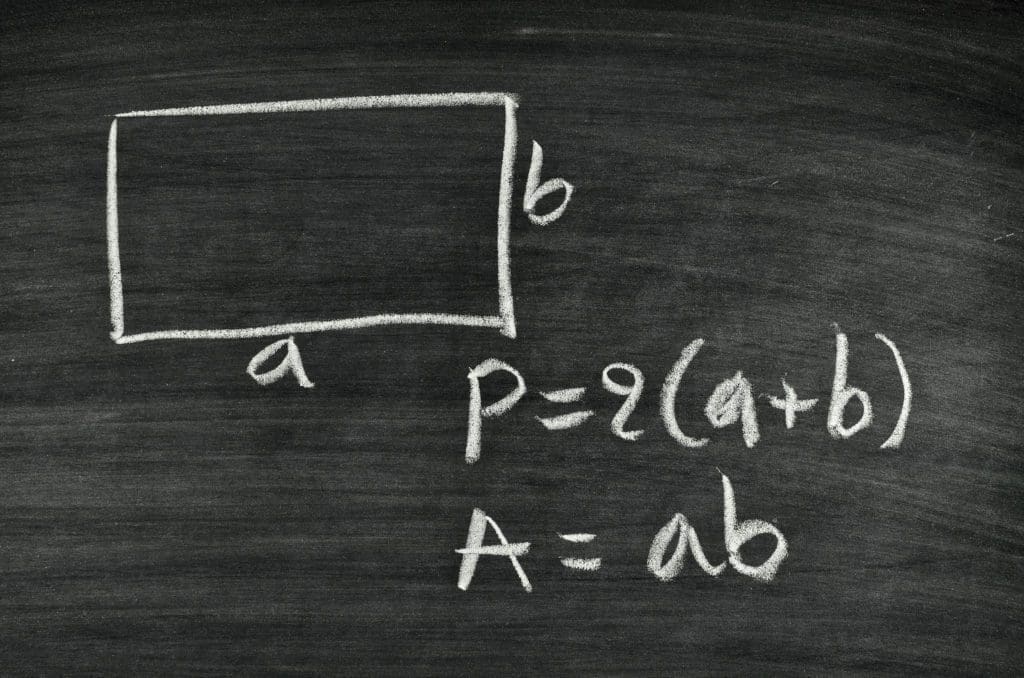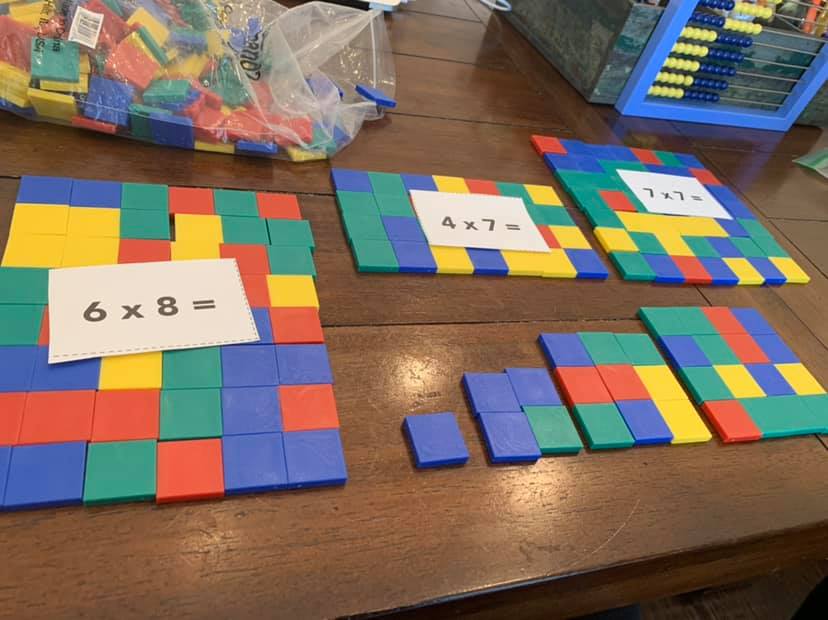
Teaching area and perimeter can be fun and engaging with the ideas below. Our goal is full understanding and application of number sense and geometrical concepts. When students see how area connects to arrays, they will know why they multiply!
Introducing the Topic
I begin teaching area and perimeter by having students work hands on with square tiles to build multiplication arrays. (Students figure out that every equation makes a rectangle, and a number times itself makes a square. As a bonus you can use this as an introduction to where the term “square root” comes from. They love impressing their parents with that one.)
When the students have built their array, I ask them how many square tiles they used. They will begin by counting the tiles, but most of the time they figure out that the number of squares they used is equal to the product of the equation they were representing. By doing this, they get practice with their multiplication conceptual understanding and fact fluency, and develop the understanding of what area is and WHY you multiply to find it.

(If you are allowed to and like using food, you can use cheez it crackers or starburst candies instead of square tiles. The principle is the same.)
Using Square Tiles and Pentominoes
After we have done this, the next challenge I like to give students is to see how many unique arrangements of five square tiles they can make with edges lined up. (A reflection or rotation doesn’t count.) There are 12 possible arrangements, called pentominoes.
After the students have figured them out, I give them premade pentomino pieces to explore. (I have colored plastic ones linked from amazon below but you can print and laminate if you prefer.) Students love making their own designs with them and trying out different ways to fit them together. We discuss how each pentomino uses 5 squares (has an area of 5 squares) but the perimeters are different. See my page on Pentominoes for more information about using these manipulatives.
Literature Connection
From there I use Marilyn Burns’ book Spaghetti and Meatballs For All, which gives a real world application to the relationship between area and perimeter. In the book, a couple is hosting a dinner party. They have enough square tables to seat all of their guests, but as the guests push the tables together, less people can be seated. I give students square tiles to represent the tables and have them physically push the tiles together as they model what is happening in the story. They see that though the area doesn’t change, the perimeter does. Here is a complete lesson using the book from Marilyn Burns’ Math Solutions.
Class Activities
The Curriculum Corner offers a FREE Area and Perimeter Resource for 3rd grade which includes anchor chart, I Can Standards, center signs, interactive notebook pages, task cards and recording pages, blank books, make a shape pages, exit tickets and more.
If you have square tiles in your hallway, use painters tape to mark off shapes and have students figure the area and perimeter of those as well.

Additional content is only available to members. This includes more activities, videos, resources for practice, projects to show understanding aligned with 3rd grade common core. Please sign in if you are a member or consider joining if you are not yet a member.
